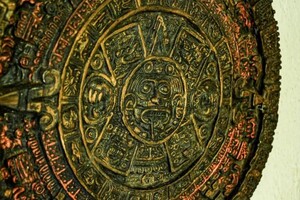Representatives of this civilization decorated their teeth with stones and amber.

Ancient Maya decorated their teeth with amber and precious stones . According to Science Alert, many members of this civilization, rich and poor, visited the dentist in their youth to drill their teeth and fill in the gaps with valuable jewelry.
Such inlays were preserved throughout life and had a ritual meaning. But it is also likely that they were not purely aesthetic decoration. A new study of cement used to fasten stones has suggested that it may have hygienic and therapeutic properties.
Read also: It is impossible to talk about the collapse of the Mayan civilization – scientists
Not only was this cement very sticky, keeping the stone in place, but some of its ingredients could fight tooth decay and reduce inflammation and infections in the mouth. The mixture was rich in organic components, which led scientists to suggest that this cement was used not only as a water-repellent adhesive.
Attaching small stones to the incisors at a young age could protect teeth from caries. The drilling used to attach the stones was so skillful that it rarely touched the pulp of the nerves and blood vessels of the tooth.
During the study, scientists analyzed teeth found at three archeological sites in Guatemala, Belize and Honduras. The people they belonged to were not part of the Mayan elite.
In the cement used to attach the stones, scientists have identified 150 organic molecules commonly found in plant resins. The composition of the mixture varied slightly in different regions of the Yucatan Peninsula, but the main ingredients were the same.
Pine resin compounds, which are believed to have antibacterial properties, have been found in most dental cements. Two of the eight teeth contained remnants of sclareolide, a plant compound with antibacterial and antifungal properties. It is also often used in the perfume industry because it smells very good.
Essential oils of the mint family are also common in cement, indicating their potential anti-inflammatory effect.
The researchers note that the findings of their study are not entirely unexpected. There is ample evidence that the ancient Maya were serious about oral hygiene. Representatives of this civilization often polished their teeth and removed them if there were signs of caries.
More therapeutic approaches to dentistry went unnoticed due to the bright decorations on the teeth. The edges of Mayan teeth were often sharpened and then decorated with precious stones, which were associated with aesthetic and ritual purposes. Dentistry was clearly an art form, but new evidence suggests that dental modifications may have been more than just beauty.
Many people have been treated, indicating that such modifications do not reflect social status. earlier.
Earlier, researchers at the University of Cincinnati found out why residents left the ancient Mayan city of Tikal. According to them, the location of the city was not very good in terms of water supply, so its residents relied only on rainwater.




